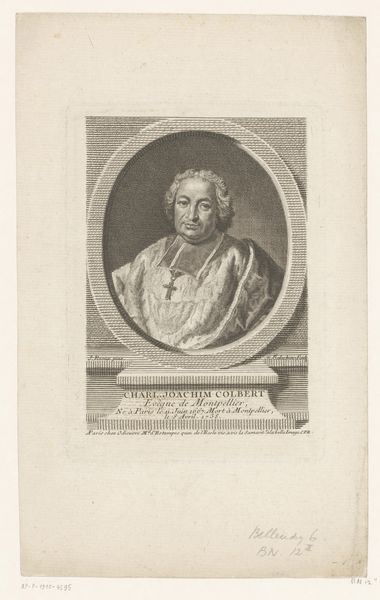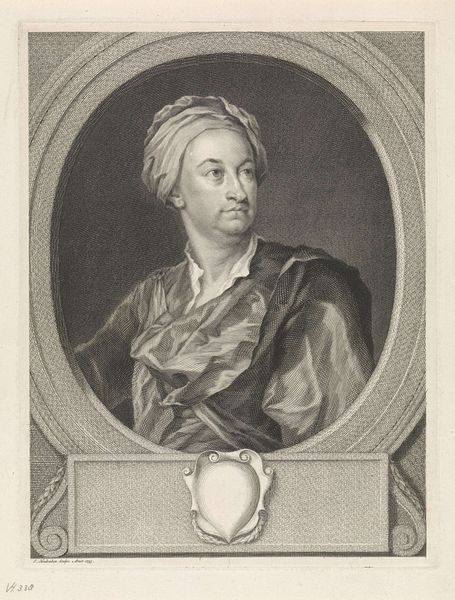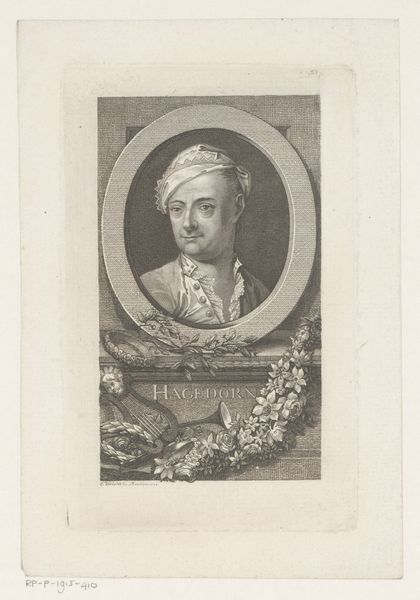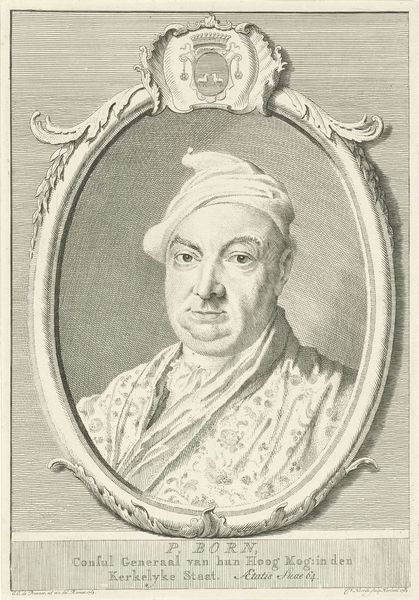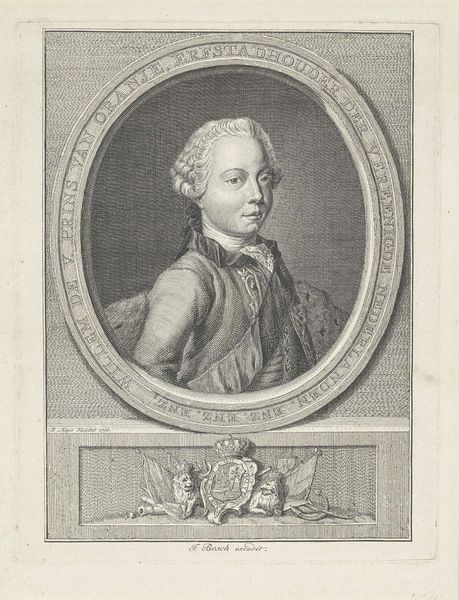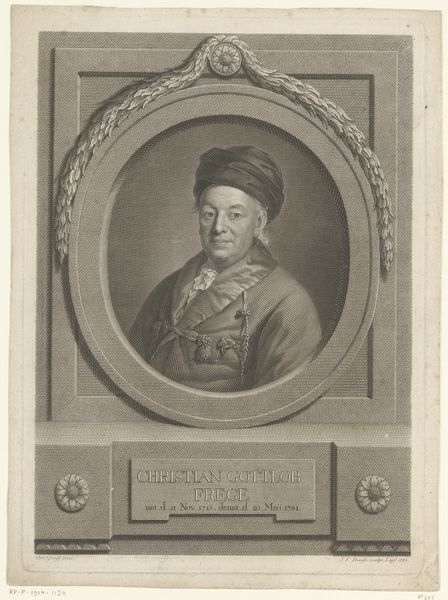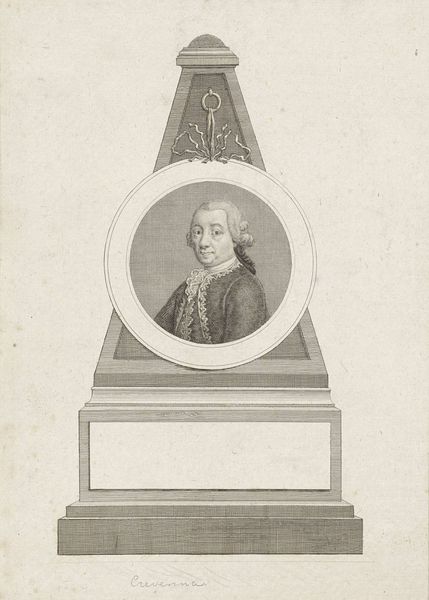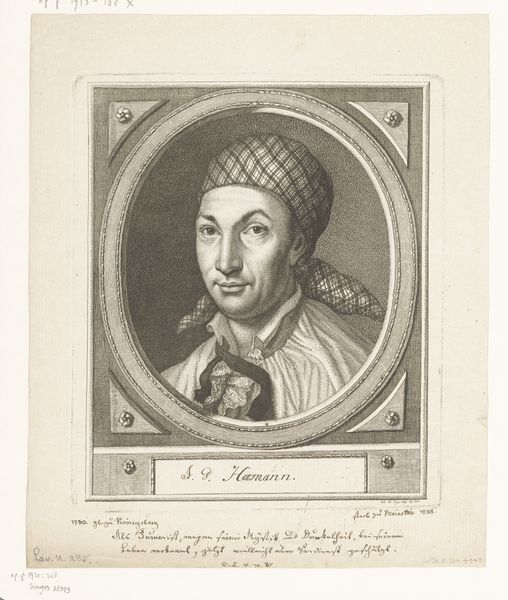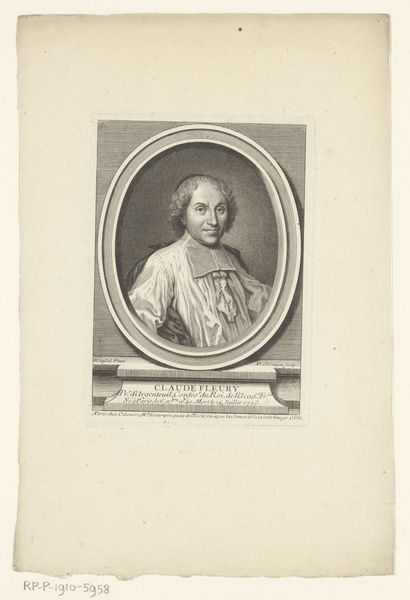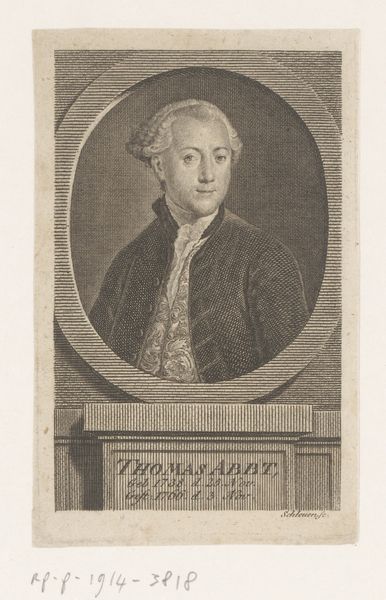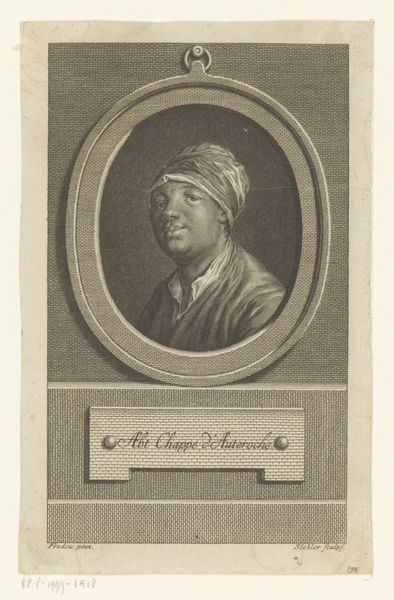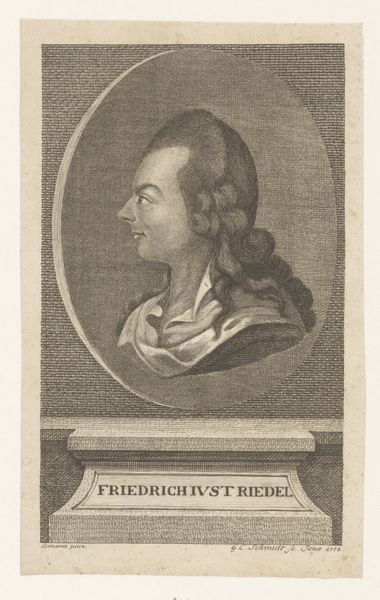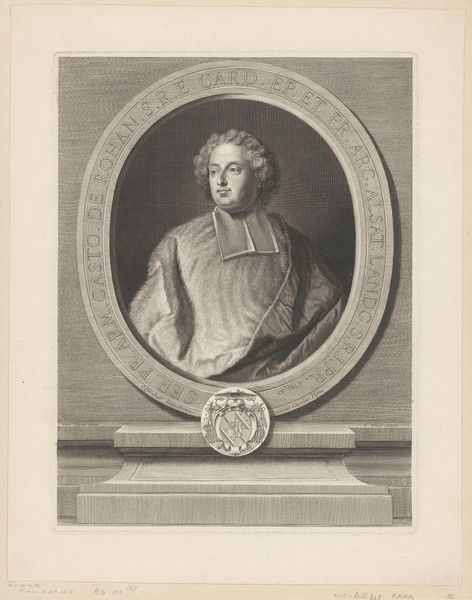
print, engraving
#
portrait
#
baroque
# print
#
old engraving style
#
line
#
engraving
Dimensions: height 163 mm, width 97 mm
Copyright: Rijks Museum: Open Domain
Curator: At first glance, there's an undeniable charm to the print, almost as if captured in a porcelain cameo. The subject's gaze is strikingly direct and a little unnerving. Editor: Indeed, this engraving by Gottfried August Gründler, made sometime between 1734 and 1765, offers us a portrait of Nicolaus Dietrich Giseke, held here at the Rijksmuseum. The precision and detail of the line work in rendering both face and costume suggest an artisan working meticulously within established traditions. Curator: Observe the way Gründler uses cross-hatching to create depth and volume, especially in the folds of the subject's robe. There’s a tactile quality to it; one can almost feel the fabric. And the oval frame itself feels both protective and restrictive, doesn't it? A device typical for Baroque period. Editor: Contextually, portraiture was a means of asserting social status and memorializing individuals within the public sphere. While Giseke's direct gaze commands attention, one wonders about the intended audience of the image. What role did Giseke play, what position he hold in society? Curator: And how intentional was Gründler's choice of materials? As a print, its reproducibility underscores an implicit intention toward wide circulation—unlike unique works destined only for private consumption by elite patrons. The effect of monochromaticity creates a solemn mood that feels rather intense and introverted. Editor: Agreed. Prints democratized access to imagery, but even then, distribution depended on networks of patronage and commerce. How were these engravings commissioned and disseminated in 18th-century German society? Such dissemination often involved complex relations with intellectuals and civic leaders, furthering shared goals and personal ambitions. Curator: The longer I examine this artwork, the more I'm fascinated by the stark lines, which paradoxically soften the overall tone and feel both fragile and formidable in the face of mortality and time's erosion. Editor: Yes, what starts out as a study in graphic texture morphs into a reflective experience—linking the printmaker's methods, their patron's intents, and our encounters today. Thank you for helping us appreciate those nuanced layers woven through Gründler’s image.
Comments
No comments
Be the first to comment and join the conversation on the ultimate creative platform.
